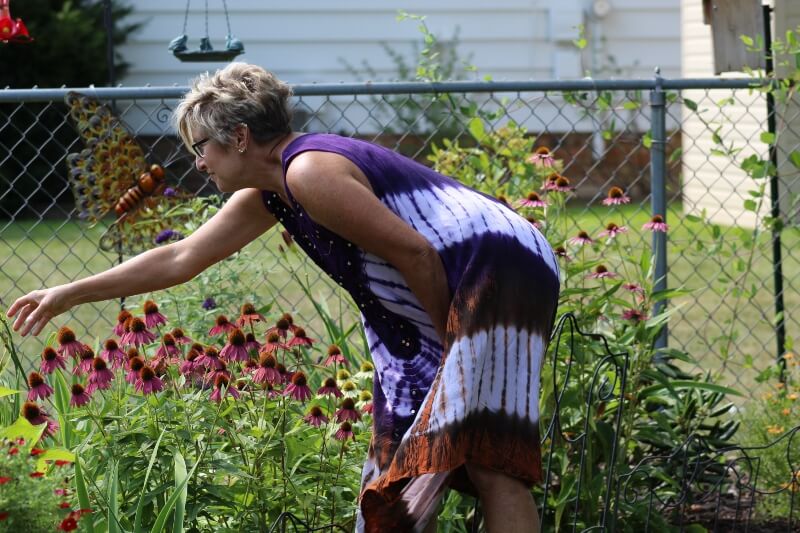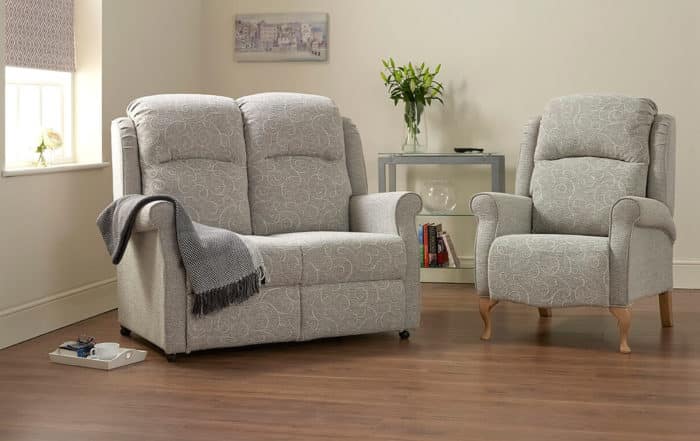11 Tips for Gardening with Arthritis
Social Links
The United Kingdom has often been described as a nation of gardeners, and every year when the weather improves and spring and summer long weekends loom, most of us can’t wait to get down to the local garden centre or get outside with our potting mix and trowels. In fact, a recent survey found that 27 million of us – roughly half the adult population – love to garden.
As well as being good for the planet, it’s good for us, too. In the same survey, 90% of respondents agreed that spending time outside was good for their physical and mental health. In the past couple of years gardening has become more popular than ever – although the average age of home gardeners is increasing. Fortunately, with the rise in popularity of shared and community gardens, including in nursing and retirement homes, and the variety of methods and tools now available to make it easier, gardening is more accessible than ever.
Gardening with arthritis
There’s no getting around the fact that gardening involves a lot of kneeling, bending, reaching, and gripping, and that can make it tricky for anyone with mobility issues. It’s particularly difficult for those suffering from arthritis, a degenerative condition which affects the cartilage and soft tissues around bones and ligaments. Although it can occur anywhere in the body, arthritis most often affects the back, hips, knees, hands, and wrists – typically the areas that do the most load bearing.
There are many forms of the disease – osteoarthritis and rheumatoid arthritis being the most common – and although there’s no cure, certain treatments and activities can slow its progress so its impact remains minimal. While medication exists for some forms, and extreme cases can be improved with surgery, the best way to manage arthritis is to keep healthy and active. Fortunately for those who love the outdoors, gardening counts as a suitable exercise – but how do you garden with arthritic joints?
It may seem difficult to garden with stiff and sore joints, but even 20 or 30 minutes a few times a week can make a significant impact on your garden, and your health. For a start, it helps strengthen your muscles and ligaments, which takes some of the strain off your joints, and increases blood flow around the body, which promotes healing and can reduce inflammation. Over time it can give you more energy, which makes the exercise, and all your other daily tasks, much easier.
How to garden with arthritis
As gardening involves a lot of bending, kneeling and gripping tools, it can put a lot of strain on the areas of the body most likely to be affected by arthritis. Fortunately, gardening with arthritis tools, and using a few simple techniques can not only make it much easier but ensure you can keep gardening. Try a few of these methods to see which ones work for you:
-
Stretch before and after
Just as with any exercise, a few gentle stretches before gardening will get the blood flowing and loosen up your joints and muscles, making it easier to do things like bending down to weed or reaching up to prune. Repeat the stretches afterwards, to ease any muscles or joints that may have been working harder than the others, especially if you’ve been doing anything repetitive. This will also reduce the likelihood of feeling sore or stiff the next day.
-
Carry on… carefully
Gardening with arthritis means you need to be much more careful about load bearing. If you must carry heavy items, avoid gripping them with just your fingers or one hand. Instead, rest them on your forearms and hold them close to your body. If you can, let them drop to the ground, rather than bending over to put them down. Whenever possible, use a wheelbarrow or trolley – ideally one with a pram style or T-bar handle and two wheels. You could even use a walker with a basket or if you use a wheelchair, get a special attachment so you can carry tools and plants around with you.
-
Use lightweight containers
Using containers or pots is a great idea because you can keep them closer together near the house, making them easier to tend and water – plus you can change them whenever you want to. Pots and containers can make for less weeding too.
Choose lightweight materials such as plastic rather than ceramic and try additives including perlite or vermiculite to make the soil lighter. If you have heavy pots, consider keeping them on wheels or trolleys so you can move them more easily.
-
Bring plants to your height
To save bending or reaching, put containers and pots on a shelf and hang baskets from a lower height. Raised beds are a great idea, especially if you’re growing fruit and vegetables, and can be made with walls wide enough to sit on. If they’re next to a wall or fence, don’t make them wider than two feet, or four if you can access them from both sides. You could also make yourself a potting ‘desk’ that you could fit a stool or wheelchair under to do your repotting and seed planting.
-
Improve your access
Having safe and easy access to your garden beds and features will not only make you more likely to get out there and enjoy them now but will future-proof your landscape against potential mobility limitations. Install good, smooth paths at least a metre wide and use non-slip, non-glare paving – this will make it easier to get a wheelbarrow or trolley around the garden as well. If you have steps, consider adding a railing or ramp and if you’re adjusting your lawn keep in mind that straight edges are much easier to maintain than curved ones.
-
Choose plants wisely
You can make life very easy or difficult depending on the plants you choose. Hardy, native perennials such as lavender, geraniums and sedums require very little water or maintenance, while a wildflower patch in your lawn saves a bit of mowing and brings the wildlife in. Climbing plants on walls are easier to maintain than hedges, and if you want to grow fruit, choose a cordon trained or espalier tree which will require less pruning and be low growing, making the fruit easier to reach.
-
Win the war on weeds
As weeding requires repetitive kneeling, bending, and gripping, the less of it you have to do the better. Use a weed suppressing membrane in your garden beds and cover them with a mulch, such as bark chips, or alternatively use ground cover plants like camomile, thyme, and creeping juniper to keeps the weeds at bay. When you do have to weed, do it after rain or watering, so the ground is softer and the job much easier.
-
Protect your hands
Hands and fingers are often painful for people with arthritis. A good pair of gloves will give you some extra grip so you don’t have to squeeze your hands as much, as well as keep them warm and protect them from nettles, thorns and spikes. You can also purchase a wrist or thumb splint from a pharmacy for extra support.
-
Water efficiently
Most people seem to love or hate watering – it’s either boring and repetitive or calming and meditative – but either way, it’s got to be done. The least labour-intensive solution is to install an automated dripper system, but you can also get an attachment for your hosepipe with a trigger handle that’s easy to grip; some even come with an extendable arm for reaching the back of the beds. If you must carry watering cans, use a good quality plastic one with two handles and keep plants that need more water close to the house (or the tap). Use water-retaining crystals in the soil so you don’t have to water so often.
-
Get a handle on things
As hands bear the brunt of the gardening workload, it makes sense to make life as easy as possible for them – especially if arthritic joints are involved. Thankfully, tool manufacturers recognise this and so spades, rakes and hoes can now come with T-bar or right-angled handles and soft foam grips. There are long-handled trowels, secateurs, and weed-pullers, or you can get a special attachment to attach to your existing tools, all designed to make gardening with arthritis much easier and less painful.
-
Get the right tool for the job
There are so many products that make life easier for people with arthritis who love to garden. Take a trip to the garden centre to try them out. Dead heading scissors are springier and easier to squeeze than secateurs, kneeling pads save arthritic knees when you’re at ground level, and ratchet pruners enable you to cut thick branches with several small squeezes, rather than one strong one. If you’re feeling indulgent you could invest in electric tools like hedge trimmers or electric shears – or even a ride on mower.
The bottom line
For the approximately 10 million people in the UK living with arthritis, mild physical exercise is a great way to strengthen and relieve painful and stiff joints. And if you like to combine your exercise with fresh air, helping the planet and creating something of your own to enjoy, there’s no better activity than getting out into the garden. Combine gardening with lifestyle aids, such as supportive furniture, to take your arthritis management to the next level and improve your quality of life as much as possible.
If you can’t manage all the gardening yourself, get a professional – or ask a friend or neighbour – to help out with the more difficult tasks. The important thing is not to overdo it. Instead, stop while you’re still feeling good and then treat yourself with a nice long soak or a sprawl in your favourite recliner chair – that way, you’ll be ready and fit to get back out there the next day, and your reward will be a beautiful garden you can enjoy for many years to come.
*This website contains general medical information. The medical information is not advice and should not be treated as such. Read our full Medical Disclaimer here.



